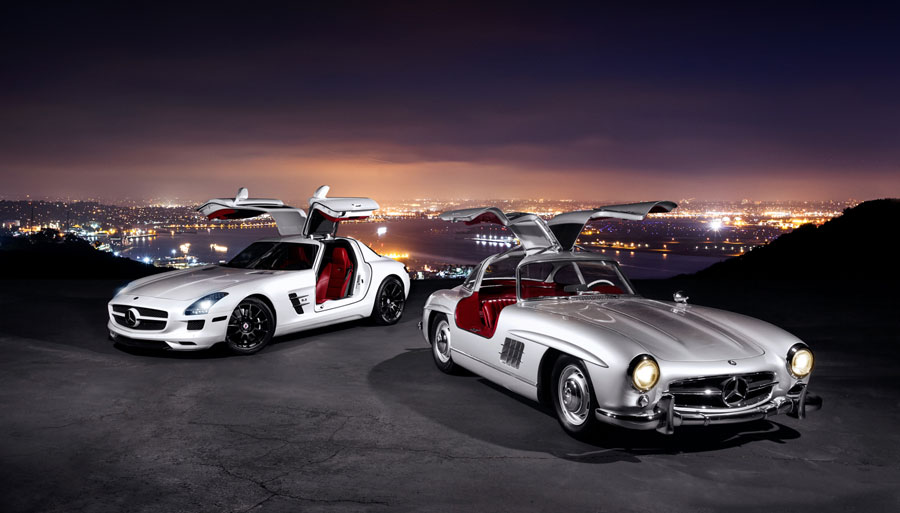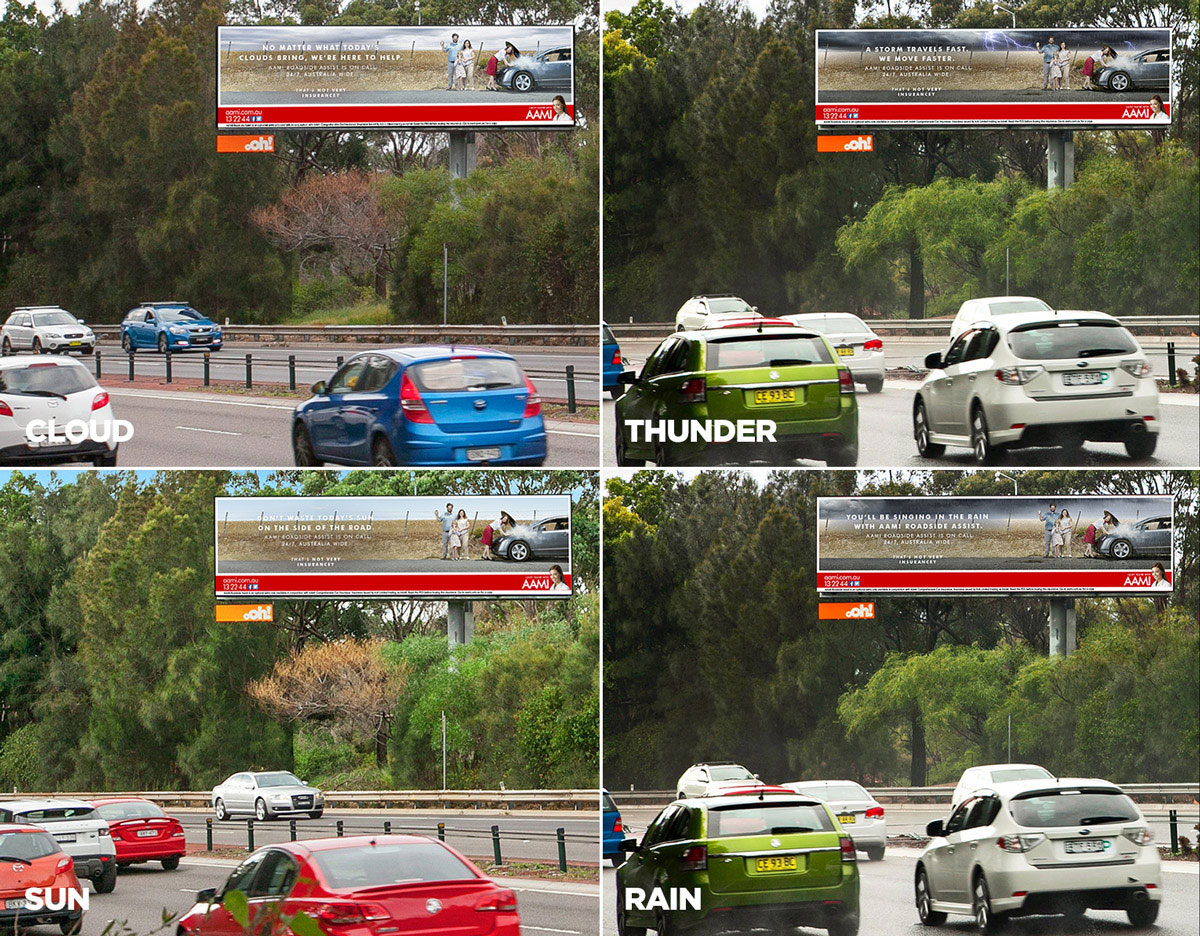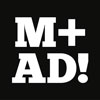Written for M+AD by oOh!media ceo Brendon Cook: It’s time the OOH industry retired the terms static and digital and moved to classic and dynamic. In the past year the Out Of Home industry has debated the best way to describe traditional billboards and their newer digital forms.
Inside the industry’s global body FEPE, the music stopped on the word Classic as the best way to redefine static billboards. The debate is not as conclusive yet on a replacement for digital but I believe there is a strong case for Dynamic.
Classic hits
Take Classic first. At the top of this page, you’ll see an image of a classic decades-old gullwinged Mercedes-Benz in front of a much newer model. It struck me as a comparison about the popularity and impact that traditional billboard advertising retains in an industry focused on digital innovation.
This image is saying not everything that is the newest, shiniest design is better than its predecessor; that the heritage of the classic car is still strong, still worthwhile, still as attention-grabbing as when the 300SL gullwing Mercedes was launched in the 1950s.
Why Classic and not static or traditional? If you think of the term traditional in advertising, it implies going out backwards. Certainly there are media sectors where the trajectory is not upwards and onwards but classic billboards are not one of them.
The single most important proposition of billboards is their unmissability. It’s their strength in a world of online advertising fraud and ‘bots’ and the ability for people to scroll quickly through what they are consuming.
To me, the Classic large format billboard delivers authenticity, fame, and ownership. They are renowned for the creativity of special builds, the depth of coverage to audiences and their ability for advertisers to hit strategic targets.
Unmissable
Nothing’s changed about their unmissability. It’s still just as strong as a classic car turning heads on motorways all over the world today.
To me, the term static or traditional doesn’t imply the quality and strength of what the medium is today. Whereas Classic implies value and that’s how we see Out Of Home billboards. They’re not going out of fashion. They’re here for the long haul – 80% of Out Of Home advertising signs in Australia and NZ are of the classic form.
As PwC noted in a recent report: “While increasing revenue from Internet-connected digital OOH will be the main engine of growth, traditional formats are holding their ground – unlike in many other segments – with physical OOH revenue set to remain steady.”
I love the idea of Classic as a term in an industry that I’m passionate about. But that’s not enough for me. We should take it one step further as an industry globally and rename digital billboards Dynamic. Yes, we live in a digital world. We’re digital natives. We are part of a digital audience. We leave a digital footprint. Our banking, our entertainment, our media and communications are digital.
We have digital downloads, digital downtime, digital updates and digital upgrades. Our art is digital, our photos are digital, our dating is digital. We’ve got digital education, digital retail, digital gaming, digital content. It’s all part of the decade-long digital revolution.
Is there a word in our language today that is more pervasive than digital? And yet, therein lies the problem.
Digitally diminished?
Because digital is used everywhere, the power of the word is diminished when you are trying to express the uniqueness, the excitement, the possibilities of any single part of our lives or our cities that is underpinned by digital technology. Such as Out Of Home advertising in its many environments from roadsides, retail centres, airports and office blocks to cafes, gyms and sporting venues.
One argument for favouring Dynamic is that the term digital, it’s so synonymous with online, is not representing enough of a difference between the digital online and digital OOH.
So why use Dynamic as the word to explain we’re talking about digital advertising in OOH?
Dynamic expresses constant change, activity, motion, keeping audiences informed with content that’s up to date. Dynamic suggests energetic, lively, powerful, forceful, potent, effective and bold. It’s not static.
In recent years, the evolution of OOH advertising to digital forms has complemented the reach and unmissable impact of Classic large format billboards.
The seamless integration of our Classic inventory with the dynamic inclusion of digital offers more effective outcomes for our clients. Together they provide a canvas for creativity by media companies and advertisers; opportunities for reinvention of campaigns and strategies.
Take motor vehicle companies. Most who have bought a combination of Classic and Dynamic roadside advertising in recent times generally used the same creative.
Relevancy matters
For a campaign I’m not saying the creative needs to be different on Classic and Dynamic. In fact it should be very similar. However I want to start seeing clients using the capabilities for Dynamic to make the creative more relevant for the time of day, weather, traffic conditions, news and events.
Dynamic OOH will allow clients to position their new car differently in the mornings to what audiences see on the commute home and again on weekends. You could even change the message to talk about the new rain sensor wipers on rainy days or the convertible roof on sunny days.
We are already seeing advertisers take this creative leap of moving from digital and embracing Dynamic. Take for example Ford’s recent campaign for their Mondeo or AAMI’s roadside assist campaign*.
Using the scale of Classic OOH and then capitalising on how Dynamic OOH can help create even greater contextually relevant campaigns in real time can all be done today. We can complement the great product statements that Classic has and bring campaigns to life across all our Out Of Home inventory by changing the creative and making it contextually relevant to a whole lot of environmental factors. In other words, Dynamic as a concept – not Digital – needs to be embraced by advertisers globally.
There’s not yet the consensus over Dynamic like there is about Classic which correctly reflects the quality of an old medium that is still as strong and valuable as it has ever been.
But for me there is no question. I firmly believe we can pull off Dynamic because most of our 6500 digital signs are Dynamic and full-motion screens that inventive creatives will increasingly use in a dynamic fashion.
How clients creatively use Out Of Home and change the copy to reflect mood, environment, weather and other contextually-relevant issues is in fact DYNAMIC by nature.
Share this Post




